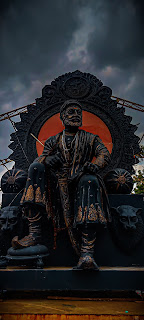Republic Day - '24
Republic Day is the day when India marks and celebrates the
date on which the Constitution of India came into effect on 26 January 1950.
This replaced the Government of India Act 1935 as the governing document of
India, therefore turning the nation into a democracy separate from British Raj.
The constitution was espoused by the Indian Constituent Assembly on 26 November
1949 and came into effect on 26 January 1950. 26 January was chosen as the date
for Republic Day as it was on that day in 1930 when the protestation of Indian
Independence was placarded by the Indian National Congress. India achieved
independence from the British Raj on 15 August 1947 following the success of
the Indian independence movement. The independence came through the Indian
Independence Act 1947, an Act of the Parliament of the United Kingdom that
partitioned British India into the two new independent Dominions of the British
Commonwealth (latterly Commonwealth of Nations). India came a indigenous
monarchy with George VI as head of state and the Earl Mountbatten as
governor-general. The country, however, didn't yet have a endless constitution;
rather its laws were grounded on the modified colonizer Government of India Act
1935. On 29 August 1947, a resolution was moved for the appointment of a
Drafting Committee, which was appointed to draft a endless constitution, with
Dr B R Ambedkar as president. A draft constitution was prepared by the
commission and submitted to the Constituent Assembly on 4 November 1947. The
Assembly met for 166 days in public sessions gauging two times, 11 months, and
17 days before espousing the Constitution. The 308 members of the Assembly
inked two handwritten clones of the document (one in Hindi and one in English)
on 24 January 1950, later much deliberation and some changes. Two days
latterly, 26 January 1950, it came into effect throughout the whole nation.
While India's Independence Day celebrates its freedom from British Rule, the
Republic Day celebrates the coming into force of its constitution. On that day,
Dr Rajendra Prasad began his first term of office as President of the Indian
Union. The Constituent Assembly came the Parliament of India under the
transitional vittles of the new Constitution. On November 25, 1949, in his
final speech to the Constituent Assembly, Dr Ambedkar remarked about the
implicit and risks of life after January 26, 1950 On the 26th of January 1950,
we're going to enter into a life of contradictions. In politics we will have
equivalency and in social and profitable life we will have inequality. In
politics we will be recognising the principle of one man one vote and one vote
one value. In our social and profitable life, we shall, by reason of our social
and profitable structure, continue to deny the principle of one man one value.
How long shall we continue to live this life of contradictions? How long shall
we continue to deny equivalency in our social and profitable life? If we
continue to deny it for long, we will do so only by putting our political
republic in pitfall. We must remove this contradiction at the foremost possible
moment or differently those who suffer from inequality will blow up the
structure of political republic which this Assembly has so laboriously erected
up. The main Republic Day festivity is held in the public capital, New Delhi,
at the Rajpath (officially named' Kartavya Path'), before the President of
India. On this day, ceremonious processions take place at the Kartvya path,
which are performed as a homage to India; its concinnity in diversity and rich
artistic heritage. On the dusk of
Republic Day, the President addresses the nation.



Comments
Post a Comment